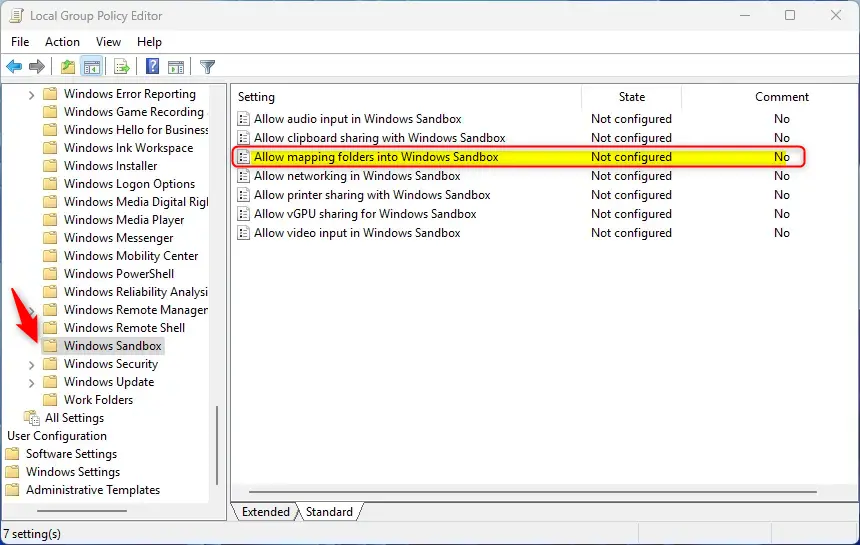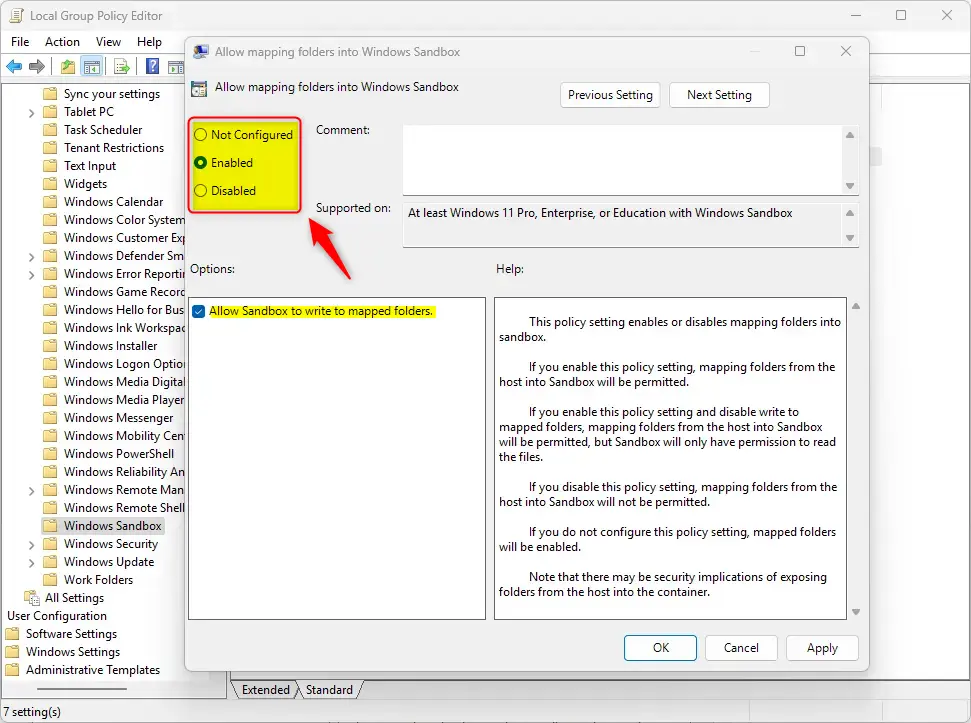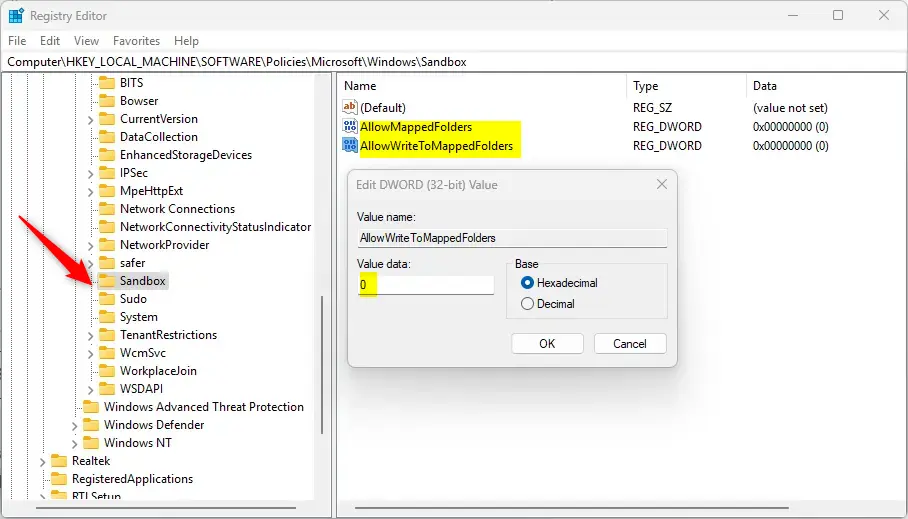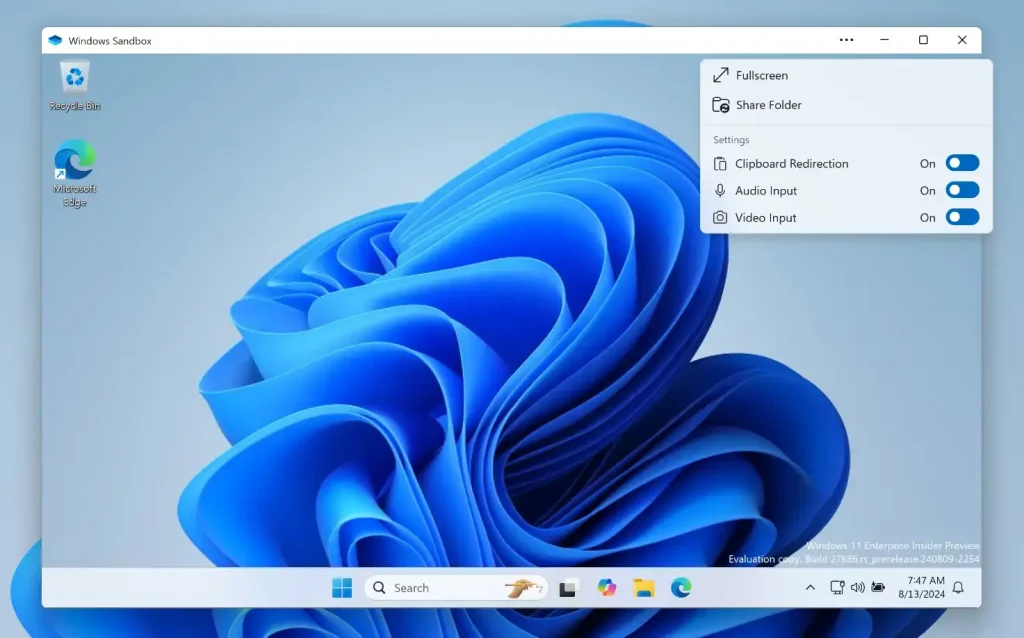This article explains how to enable or disable the Windows Sandbox host-sharing feature in Windows 11.
Windows Sandbox is a feature that provides a lightweight and isolated environment in which to run untrusted applications. It allows users to test software and browse websites in a secure “sandboxed” space, ensuring that potential threats do not affect the underlying operating system.
A sandbox environment is temporary. All the software, files, and the state are deleted when closed. A new sandbox environment instance is created every time you open the app.
With Windows 11 build 27686.1000, Microsoft added new runtime clipboard redirection, audio/video input control, sharing folders with the host at runtime, and more.
The steps below show you how to enable or disable the sandbox host-sharing feature in Windows 11.
Turn on or off the Share folder with Sandbox feature on Windows
As mentioned, users can share folders with the Windows sandbox environment using the improved client.
Here’s how to enable or disable this feature.
First, open the Local Group Policy Editor (gpedit.msc). (Search for “Edit group policy”) on the Start menu.
Then, navigate the folders below:
Computer Configuration -> Administrative Templates -> Windows Components -> Windows Sandbox
In the Group Policy details pane on the right, locate and double-click the “Allow mapping folders into Windows Sandbox” settings.

On the “Allow mapping folders into Windows Sandbox” window, set the option to Not Configure, Enabled, or Disabled.
- Not Configured (default)
- Enabled – Mapping folders from the host into Sandbox will be permitted.
- Disabled – Mapping folders from the host into Sandbox will not be permitted.
Sandbox can also write to a mapped folder if you select the settings under Options.

Click OK to save your changes. You have to reboot your device to apply the settings.
Enable or disable the Sandbox folder-sharing feature using the Windows Registry Editor
Yet another way to enable or disable the Sandbox sharing feature is to use the Windows Registry editor.
First, open the Windows Registry and navigate to the folder key path below.
Computer\HKEY_LOCAL_MACHINE\SOFTWARE\Policies\Microsoft\Windows\Sandbox
Next, double-click these two (REG_DWORD) names on the Sandbox key’s right pane to open it.
AllowMappedFolders
AllowWriteToMappedFolders
Then, enter a value 0 for both to disable the Sandbox folder-sharing feature in Windows.
If you do not see the two items, right-click a blank area and create a new DWORD (32-bit) registry item for both.
Then, enter a value 0

Delete both items created above to restore the default behavior and allow Sandbox folder sharing with the host.
AllowMappedFolders
AllowWriteToMappedFolders
Save your changes and restart your computer.

That should do it!
Conclusion:
- Enabling or disabling the Windows Sandbox host-sharing feature in Windows 11 requires modifying group policy settings through the Local Group Policy Editor or registry settings via the Windows Registry Editor.
- Users can choose to allow or disallow mapping folders into Windows Sandbox, as well as the ability for Sandbox to write to a mapped folder, providing control over the extent of folder-sharing functionality.
- It is important to reboot the device after making changes in the group policy settings for them to take effect, while modifications in the registry settings also necessitate a computer restart.
- These methods allow users to manage shared folders’ security and access control within the Windows Sandbox environment, contributing to a more secure and customized user experience.

Leave a Reply Cancel reply